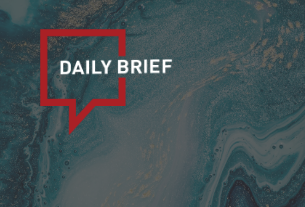One of the most important decisions every hotel organization needs to make is establishing their public pricing structure.
For some hotels, this can be an overwhelming challenge – they might be new to their market, constrained by parity commitments, or simply looking for an approach that brings better revenue results than their existing one.
For other hotels, they might have a desired strategy in mind, but their technology can’t successfully deploy it.
No two hotels are identical – and a one-size-fits-all pricing approach does not improve revenue performance for every hotel. In an industry where competition is only getting stronger, it is critical that hotels evaluate and consider which strategy best fits their hotel’s unique business needs.
Here are three analytically-advanced methodologies available for today’s hotels and the importance that technology plays in automating strategies.
1. Pricing by day
Daily pricing (“BAR by Day” or “Daily BAR”) is a strategy where a different rate is charged for each night of a guest’s stay. It is based on the demand and price sensitivity for a one night stay on each night – meaning that each night is priced independently of any others.
Daily pricing is generally the simplest to implement across all of a hotel’s selling systems and channels. However, it may not provide the ability to capture the most optimal revenues based on the demand by the arrival date and the guest’s length of stay.
2. Pricing by a guest’s length of stay
This approach offers rates that are based on both the arrival date and the total duration of a guest’s stay. This option (commonly referred to as “BAR by LOS”) considers the demand and price sensitivity for each arrival date based on the duration of stay – meaning that one rate is calculated by evaluating all of the desired nights in conjunction with one another.
An advantage of length of stay pricing is that guests are offered one simple rate for their entire stay – based on their arrival date and total reservation night length. This can help many hotels achieve optimal revenue performance since its rate is based on specific patterns by arrival date and length of stay.
3. Continuous pricing
Continuous pricing provides hotels with the most flexibility within their desired rate strategy. It employs a similar methodology as daily pricing; however, rate values are calculated within a range defined by a minimum and maximum rate for each room class.
Rather than relying on user-defined rate values, hotels identify their minimum and maximum public rates for an analytical, continuous calculation of the rate value within their desired range that drives optimal revenue. It allows hotels to get as close as possible to the exact analytically optimal price and adheres to any marketing rules (such as rates that must end with .00 or .99.)
Decisions over recommendations
Choosing the right pricing approach for each unique hotel is one of the first important steps to a successful revenue strategy. One of the next critical steps is automating that chosen approach.
While some revenue technologies return recommendations, it is important that hotels are looking to their systems for automated decisions.
Pricing decisions are system controls that are continually optimized and automatically deployed to integrated selling systems whereas recommendations have to be manually implemented into integrated selling systems.
This means users are still responsible for reviewing, approving and uploading every recommendation the revenue management system produces. This not only impacts the amount of time and resources spent validating and uploading decisions, but it also forces users to be less nimble – having less time to accommodate sudden shifts in the market.
All hotels face the challenges of setting associated pricing strategies, distributing pricing across various channels and reporting on the results. But hotels should not have to sacrifice time that should be spent on strategy that is instead spent reviewing and implementing their pricing recommendations.
Read original article




